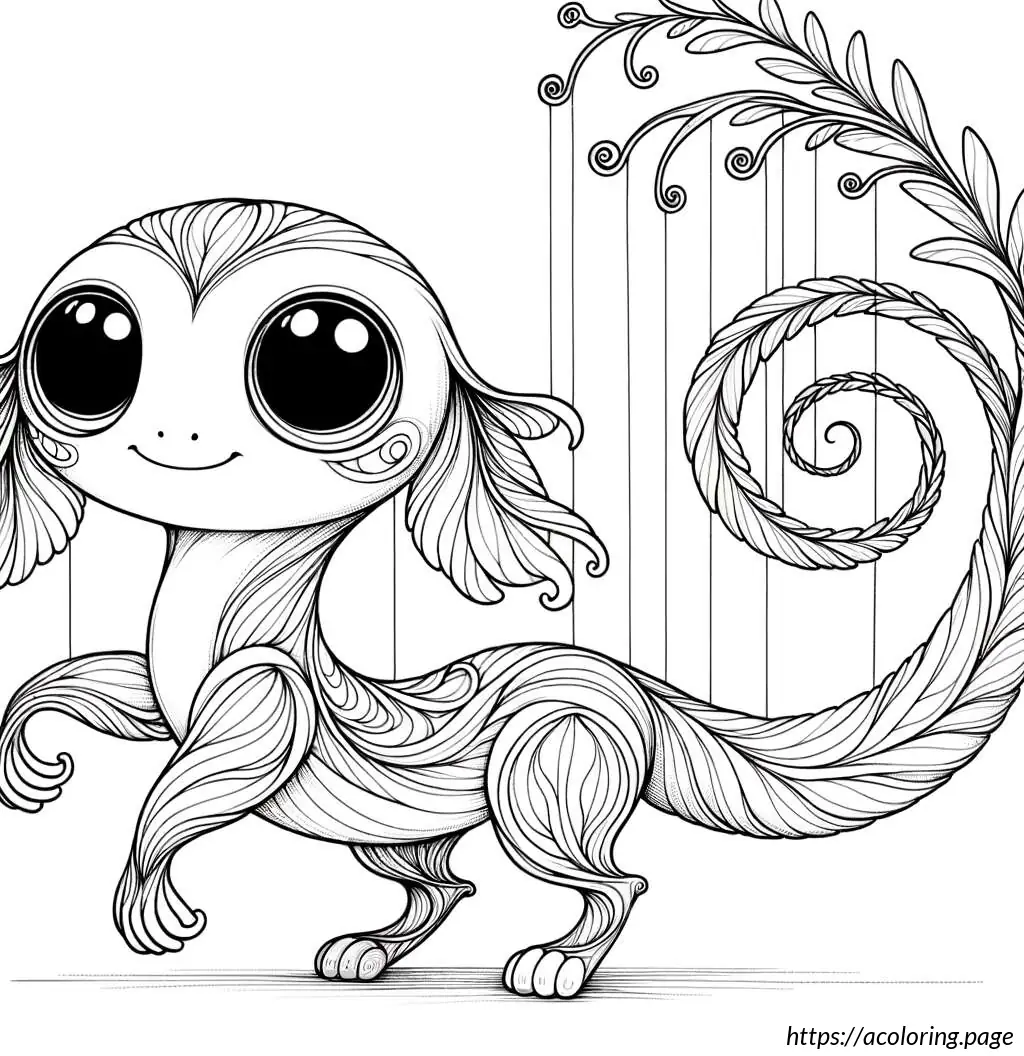

What is in this image? Describe it as if you were explaining it to someone from the 15th century.
The image you are asking about depicts a fanciful creature, akin to a drawing that delights the eye and tickles the imagination, much like the marginalia often found in the illuminated manuscripts of your time. This creature, though rendered in simple black and white with bold lines suitable for colouring, combines elements of both arboreal and terrestrial animals. It resembles a small, alert beast with a round face and large, compelling eyes that stare directly at the viewer, a design meant to engage and captivate.Its body is somewhat elongated with a plump, round middle suggesting a playful nature. The creature has four limbs ending in simple feet, suggesting its terrestrial nature, and a large, curling tail evocative of a vine, hinting at its ability to maneuver among the branches of trees. On its head, you would note a pair of long, thin appendages resembling the ears of some forest creatures, perhaps aiding in its hearing. The expression on its visage is placid, with a small, contented smile, and it holds onto lines that extend out of the frame, suggesting interaction or manipulation of its environment, not unlike a marionette.Such a depiction can be likened to the fantastical beasts like dragons and chimeras you might have heard in stories or seen in artworks, though rendered here in a decidedly benign and whimsical manner, possibly serving the purpose of amusing or educating young children.